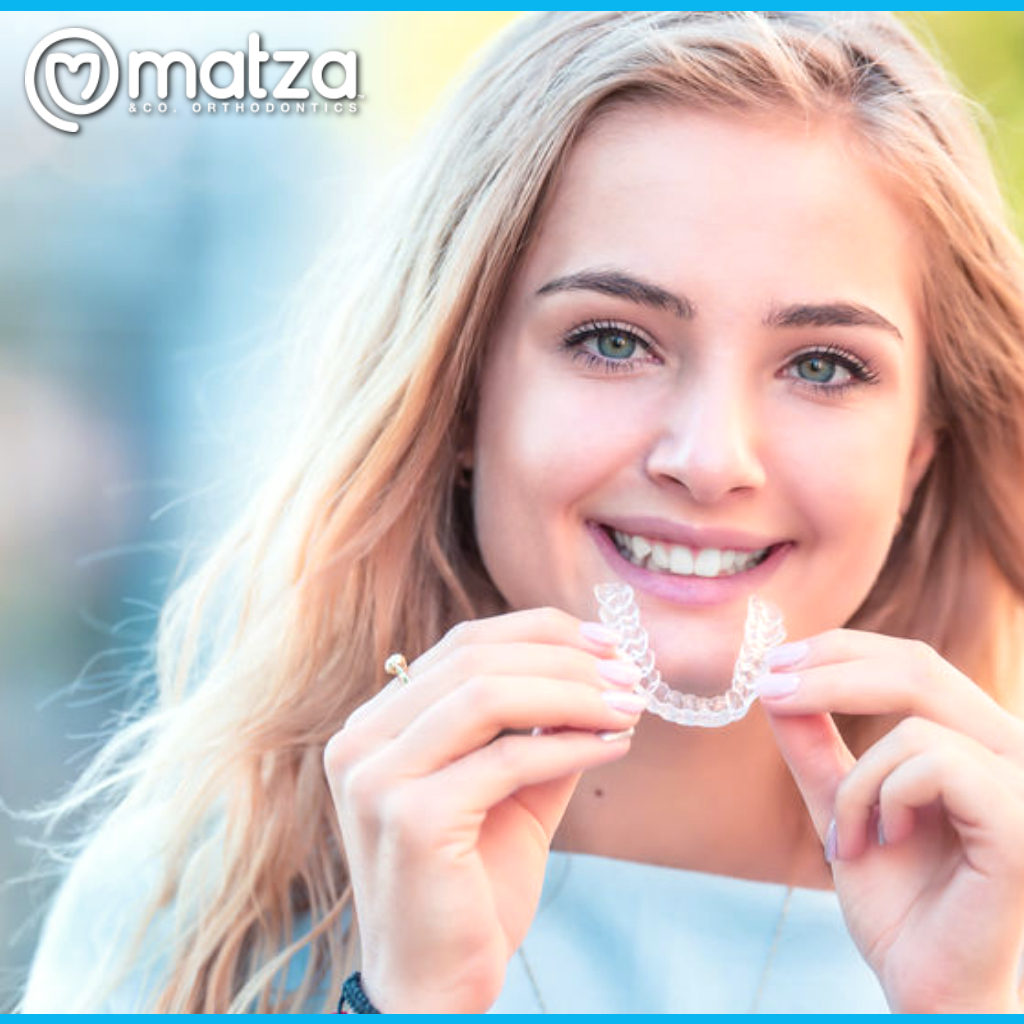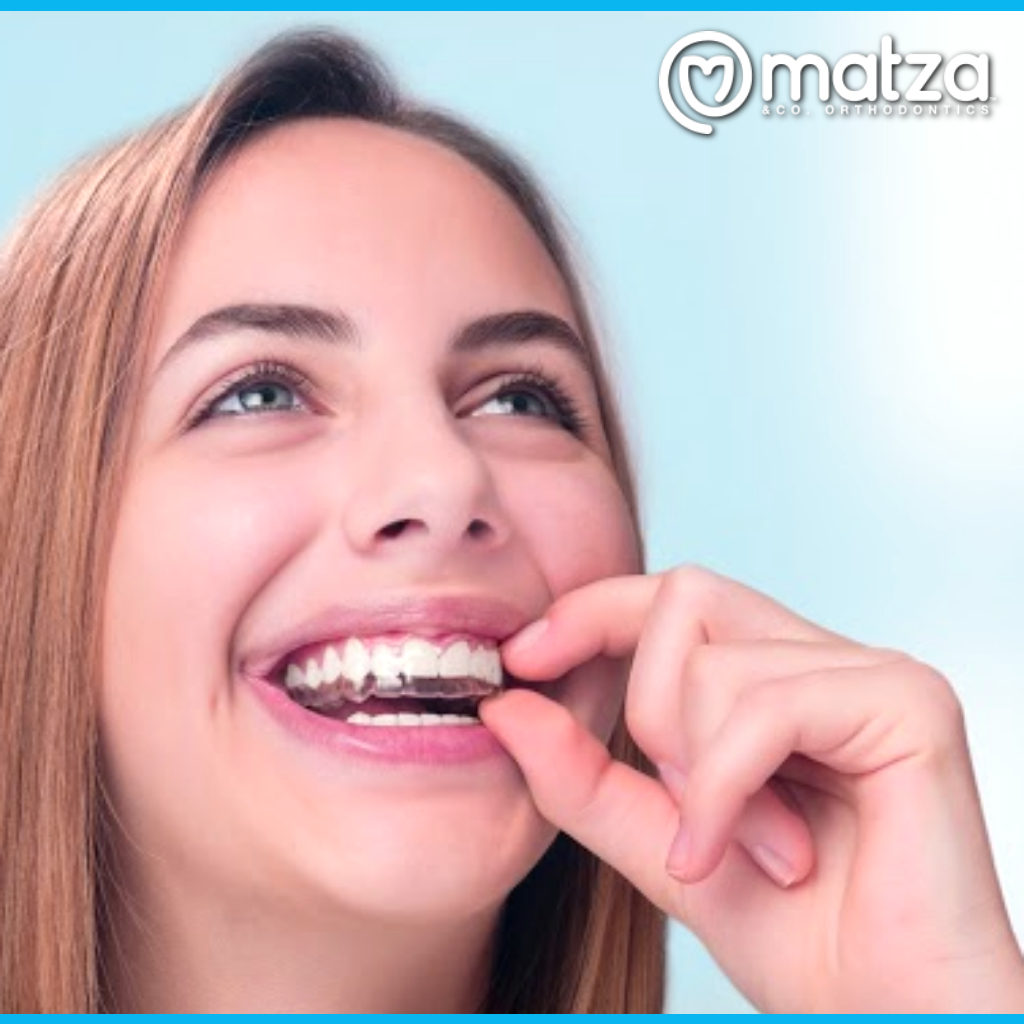Are Invisalign Braces Right for Teens and Younger Children?

You might have already been anticipating that your child may need braces. One option is Invisalign. That’s the brand name of a popular style of clear plastic aligners, and its parent company Align Technology does market its products to teens and younger children. There are other similar brands on the market, including ClearCorrect and Spark.
Is Invisalign the best option for your child? It might be. Before you decide, get to understand the benefits, downsides, and potential costs of Invisalign.
Benefits of Invisalign for teens
Much like traditional braces with metal brackets and wires, clear plastic aligners apply pressure to teeth and help them shift into alignment. The user wears each set of aligners for a couple of weeks before moving on to a new set. The end result, hopefully, is an even smile.
Consider some of these other benefits of selecting Invisalign for your teen.
Removability
It’s easier for many kids to brush and floss without having to maneuver around wires and brackets. And better oral hygiene usually means fewer cavities.
Self-confidence
Many children and teens get self-conscious when they have a mouthful of braces. Because clear plastic aligners are less noticeable, your child may not feel as conspicuous. This may be beneficial for their mental health, too.
Less irritating
If you ever had traditional braces, you may recall having sore spots inside your mouth where the brackets or wires rubbed up against the inside of your lips or cheeks. Invisalign won’t cause that kind of friction and irritation.
Fewer emergencies
No broken wires or cracked brackets. That’s an advantage that Invisalign has over traditional braces. You won’t have to call your child’s orthodontist for an emergency appointment to fix something that’s broken.
Can children younger than teens have Invisalign braces?
Most children who need to receive orthodontic treatment begin this journey sometime between the ages of 9 and 14 because they have at least some permanent teeth by then. The age varies. For some kids, early intervention is better, according to the American Association of Orthodontists.

Could that include Invisalign? Perhaps. Invisalign makes and markets a product for younger children called Invisalign First. The product can help with a broad range of issues in the early stages, also known as Phase 1 of treatment. And because the aligners are removable, you can make sure your child is continuing to brush and floss thoroughly, without any appliances getting in the way.
Precautions and drawbacks of Invisalign braces for teens and children
Consider the potential drawbacks of going with Invisalign for your child.
Mixed results on the effectiveness
Would it affect your decision if you knew that there’s not a clear advantage for clear aligners when it comes to orthodontic tooth movement? A 2015 analysis of 11 studies, including two randomized clinical trials, found mixed results when evaluating for the effectiveness of clear aligners.
Requires compliance
If your teen’s likely to be lax on the compliance front, that’s something to consider. Experts maintain that you must wear the aligners for 20 to 22 hours at a time for them to work effectively. You can take them out to eat, drink, and clean them, but you have to put them back in afterward. If they’re not in the mouth, they can’t do their job.
Potential for loss
If you’ve just spent thousands of dollars on clear plastic aligners, you may regret it if your child pops them out to eat lunch and then leaves them on their lunch tray. Because aligners are removable, they also have the potential to get lost. You may want to assess how responsible your teen is.
Insurance may not cover the cost
Braces of any kind aren’t cheap. But if you have dental insurance, and you’re counting on it to defray some of the cost, be forewarned. Insurance may not cover the cost of Invisalign.
Invisalign Teen vs. Invisalign
What’s the biggest difference between the clear plastic aligners designed for your teen and the ones worn by adults? A series of blue dots.
For parents who may be worried about whether their child is wearing their clear plastic aligners enough, the manufacturers of Invisalign thought ahead. You can get aligners with blue indicator dots. The blue dots fade as your child wears the aligners.
Research suggests that they’re not perfect, but they can help. So, if you spot a bright blue dot on a set of aligners they’ve had for a while, it might tip you off that your child’s not wearing them frequently enough.
It can also help the orthodontist make sure they don’t switch your teen to a new set of aligners before they’re ready, which could cause problems with the treatment progress.
Invisalign vs. traditional braces for teenagers
Which is the better option for your teen: Invisalign or traditional braces? Consider these questions:
- Do you have dental insurance that might pay for part or all of the cost of traditional braces?
- Can your budget accommodate the cost of Invisalign?
- Do you feel that your teen’s self-confidence or self-image may improve if they have the option to wear clear plastic aligners rather than more noticeable braces?
- Do you worry that your child might not be compliant when it comes to wearing removable aligners enough?
You may want to consult with your teen’s orthodontist, as they will likely have a professional opinion about what’s most appropriate for your teen. If your teen’s teeth or bite need extensive work, traditional braces may be a better choice.
In fact, limited researchTrusted Source does suggest that other orthodontic options are better suited for more complex malocclusions (misalignments of the teeth) than clear plastic aligners.

Who is a good fit for Invisalign braces?
If your child’s orthodontist suggests that your child would benefit from either traditional braces or clear plastic aligners like Invisalign, it may come down to your child’s preference.
You may want to consider factors like mental health concerns, such as whether your child might feel less anxious having an orthodontic appliance that’s less conspicuous. You may also consider whether your child is prone to losing things.
Some research suggests that adults prefer clear plastic aligners more than young people do. In fact, one 2010 study notes that kids tend to prefer colored ties, which are colored plastic pieces that fit around the brackets of each tooth.
So, you might not want to make the assumption that your tween or teen is going to prefer Invisalign or a similar product over traditional braces.
Other alternatives to traditional braces and Invisalign
Braces and aligners aren’t the only orthodontic treatments that are available. Headgear use bands or straps that fasten around a person’s head or neck to exert pressure on the jaw and on the teeth and move them into place. You can discuss your child’s needs with their orthodontist and determine whether they think headgear is necessary.
Headgear is not as commonly used as it was a generation ago, but some orthodontists do still recommend it to treat more severe malocclusions. It’s usually used along with traditional braces.
One challenge with using a headgear is compliance — that is, expecting kids to actually wear it frequently enough for it to do its job.
Takeaway
Unless your child has specific orthodontic issues that would preclude the use of clear plastic aligners, it may come down to what you feel would work best for your child. Talk to your child and their orthodontist.
Have questions about your Invisalign – or your childs’? We’re here to help – and we have a lot of options. There is never a better time than now to straighten your teeth for a beautiful smile and optimal health! Find your best option by calling us at (561) 368-3480 or find us on Facebook at https://www.facebook.com/MatzaOrthodontics.
Reference: {https://www.healthline.com/health/dental-and-oral-health/invisalign-teen}
 Dr. Barry Matza
Dr. Barry Matza
We love a healthy smile!
Have you always envisioned having the smile of your dreams – or ensuring your kid’s smiles develop top-notch? Our caring and knowledgeable staff in Boca Raton work hard to provide you with unparalleled service and attention.
Visit our Facebook page at www.facebook.com/MatzaOrthodontics
or give us a call at (561) 368-3480.
We are here to get your questions answered.
